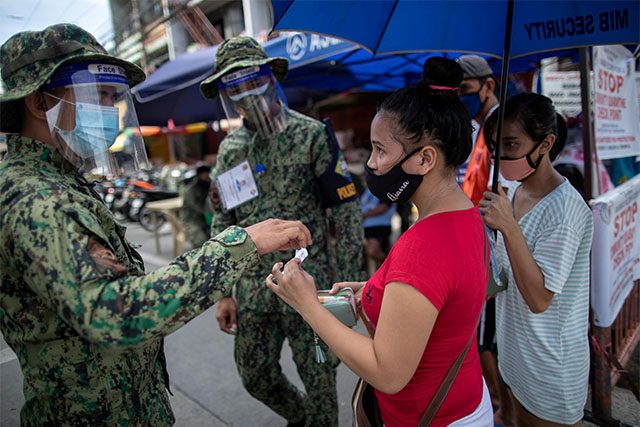
MANILA — Philippine President Rodrigo Duterte said on Monday partial restrictions in and around the capital Manila will be kept for another month starting Sept. 1 to tackle a rising number of coronavirus cases and further expand hospital capacity.
Duterte announced the decision in a late night televised address after the health ministry reported another 3,446 new cases of the coronavirus and 38 fatalities that day, taking its total count to 220,819 cases with 3,558 deaths.
Health Secretary Francisco Duque said the daily reported cases “remains high,” citing a need to intensify anti-COVID-19 measures to slow the infection rate, which is the highest in Southeast Asia.
The time for cases to double has slowed to 12 to 13 days from seven days, Duque said.
Carlito Galvez, a former military chief in charge of the national coronavirus task force, said the government was working to boost hospital capacity and would add 1,000 beds in Manila and nearby provinces, which account for most of the cases.
“We need to strengthen treatment facilities, especially ICU (intensive care units), given the possibility of an increase in severe cases once we further open the economy,” Galvez said during the task force’s meeting with the president.
Manila ended reimposed strict lockdown measures on Aug. 19 to boost business activity and the economy which fell into recession for the first time in 29 years with a record slump in the second quarter.
Most businesses, including dine-in services will be allowed to reopen, Harry Roque, Duterte’s spokesman said. Religious services will continue to be permitted with a maximum attendance of 10 people.
People must also wear masks in public and observe one-meter social distancing, while children, the elderly and pregnant women are urged to stay at home, Roque said.
The government has tested more than 2.4 million people and aims to test 10 million, or nearly a tenth of the population, by the second quarter. —Reporting by Karen Lema; Editing by Richard Chang









